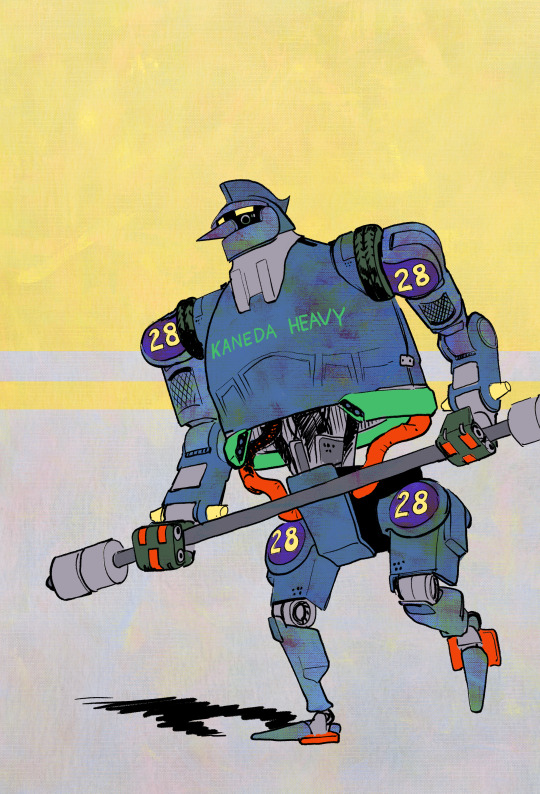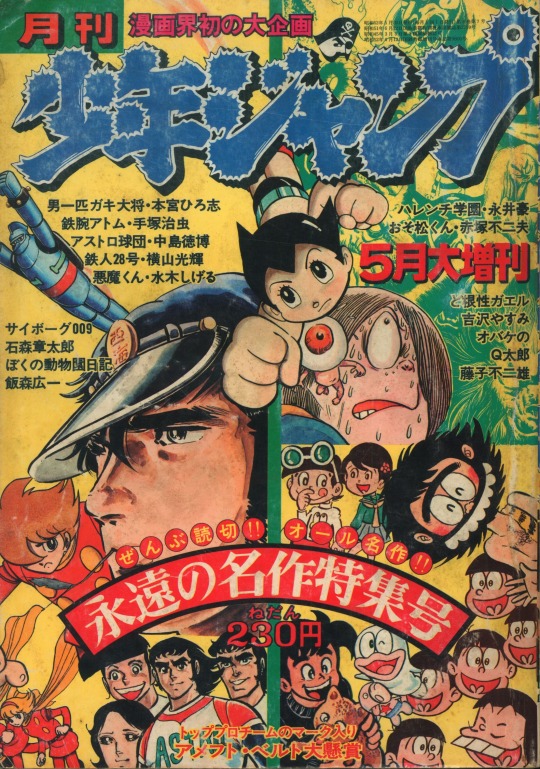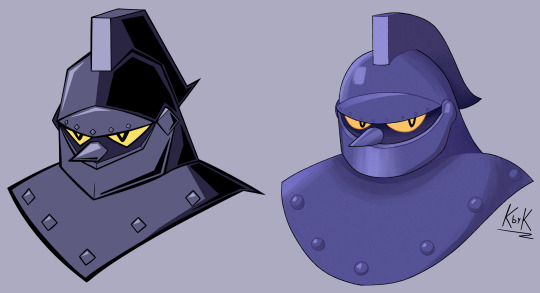#Gigantor
Explore tagged Tumblr posts
Text
#anime#mecha#mecha anime#gundam#evangelion#mazinger z#aura battler dunbine#gunbuster#diebuster#gasaraki#the five star stories#the big o#votoms#tetsujin 28#gigantor#macross#full metal panic
793 notes
·
View notes
Text

youtube
On this day 13 Years ago, when the clock struck midnight to begin April Fool's Day 2012, was "The Night no 90's Kid Slept." When @adultswim revived @toonami after 4 years being off the air.
Starting a movement leading to Toonami's return on May 26, 2012, and helped jumpstart an anime resurgence in the west after the late 2000's bubble burst.
Do you remember where you were when #Toonami was revived?
#toonami#adult swim#cartoon network#bleach#dragon ball z#dbz#gundam#gundam wing#tenchi muyo#outlaw star#big o#yu yu hakusho#blue submarine no. 6#trigun#astro boy#gigantor#Youtube
75 notes
·
View notes
Text

A really shiny Tetsujin 28, aka Gigantic, action figure.
#Tetsujin 28#Ironman 28#Gigantor#robot#mecha#manga#anime#Mitsuteru Yokoyama#Japanese superheroes#action figures#toys
35 notes
·
View notes
Text

INKtober2024-Remote
Before The Iron Giant and Hogarth, before Baymax and Hiro, there was Tetsujin-28 (Gigantor) and boy detective Shotaro Kaneda (Jimmy Sparks)!
#my art#artists on tumblr#inktober#fan art#illustration#micron pens#pen and ink#tetsujin 28#gigantor#鉄人28号#mitsuteru yokoyama#old school anime#classic anime#classic manga#giant robot#crime fighters
65 notes
·
View notes
Text

28 notes
·
View notes
Text

Meeting
Kobe, Japan 2010
#photography#photo#landscape#liminal spaces#cyberpunk#Japan#japanese#travel#鉄人28号#Iron Man No 28#Gigantor#sleepytrain
26 notes
·
View notes
Text

Monthly Shōnen Jump (月刊少年ジャンプ) / Shūeisha (集英社) / May 1977 issue
#vintage manga#shonen manga#retro shonen#70s manga#shonen jump#cyborg 009#osomatsu-kun#gegege no kitaro#gigantor#tetsujin 28#astro boy#no idea what dark magic shueisha's legal team had to do to get all these characters from other publishers' shonen mags in here#>100 notes#shueisha#issue month: may#月刊少年ジャンプ#集英社
123 notes
·
View notes
Text

Pick a robot.
38 notes
·
View notes
Text

Grandpas.
39 notes
·
View notes
Text
An Abbreviated History of Mecha Part 1: The Mighty Atomic Prelude (The 50's and 60's)

Welcome to An Abbreviated History of Mecha anime. Today, we're starting at, as Fraulein Maria would say, at the very beginning. We're taking a quick peak at the beginning of the canon, which means that we're starting back in 1950 (specifically 1952). I should also confess right now: there are two series on here that are demonstrably NOT mecha shows. However, due to their sheer influence on Japanese media as a whole, I feel it is important to bring them up as being honorary mecha shows due to their sheer influence pop culture.
Tetsuwan Atom/Mighty Atom/Astro Boy (1952)

Starting us off is Osamu Tezuka's seminal manga series, Mighty Atom. Known over here in the west as Astro Boy, this series would be what kickstarts a lot of the modern anime and manga industry due to its sheer popularity. Astro Boy would also be one of two series that would be emblematic of how Japanese pop culture would portray the recent use of atomic energy. It should also be worth noting that realizing that Astro technically is a mecha is what got me to start using a broader definition of mecha instead of the classic giant robot definition.
Due to its fame, Mighty Atom has receive multiple adaptations throughout the years. Of note are:
The original 1963 anime.
New Mighty Atom (1980) which updates the series to 1980's animation standards.
The 2003 anime, which does the same, but to the standards of early 2000's anime.
The 2009 CGI movie.
Gojira/Godzilla (1954, honorary mecha series 1)

1954 would also give us Ishiro Honda's Godzilla, the movie that would make tokusatsu-styled live action stories in Japan. Godzilla, alongside RKO's King Kong, would play a large part in popularizing the concept of kaiju. And boy will kaiju play a big part in the history of the mecha canon. As we'll see soon enough, the history of tokusatsu heroes, kaiju, and robots are all intertwined with one another.
Godzilla has starred in numerous movies since the original, but for stories based off of the original there are:
Godzilla Raids Again (1955), a direct sequel.
Godzilla, Mothra, King Ghidorah: All Out Monsters Attack (2001), a Heisei-era production that uses the original '54 Godzilla as a manifestation of the horrors of World War II.
Shin Godzilla (2016), a re-imagining of the original movie set in contemporary times directed by Hideakki Anno.
Godzilla Minus One (2023), the most recent outing inspired in part by GMK.
Tetsujin 28-go/Gigantor (1956)

(Oh hey, this gif again!)
Tetsujin 28-go is the creation of one Mitsuteru Yokoyama and is generally regarded as the grandfather of the giant robot style of mecha. Tetsujin is unique amongst mecha in that it is controlled not by a pilot riding inside of it, but by a little kid with a controller. Tetsujin 28, alongside Mazinger Z, would help to codify a lot of the tropes common to the classic superhero mecha anime that would be prevalent in the 70's. Like Mighty Atom, Tetsujin would receive multiple adaptations throughout the decades.
Shin Tetsujin 28-Go/The New Adventures of Gigantor (1980), which updates Tetsujin's design to look more in line with something like Mazniger Z.
Tetsujin 28-go FX (1992), sporting a radically different look that's more akin to something out of the Brave Franchise.
Tetsujin 28 (2004), a faithful adaptation of the original manga (at least I think it is) directed by Yasuhiro Imagawa.
Cyborg 009 (1964)

Created by Shotaro Ishinomori in 1964, Cyborg 009 is another classic human-sized mecha series. Cyborg 009 would be the first of many hits for Ishinomori, and he will be mentioned again later in this series.
Oh boy... I am not a Cyborg 009 nut, but in terms of adaptations, Cyborg 009 has:
The 1966 Film
The 1980 Film
009 Re:Cyborg (2012)
The Call For Justice Trilogy (2016)
The 1968 Anime
The 1979-1980 Anime
The 2001-2002 Anime (I actually remember when Toonami aired this series!)
Cyborg 009 vs Devilman (2015 OVA)
If you want to follow someone who follows a lot of Shotaro Ishinomori's works, I'd recommend checking out YouTuber Mercury Falcon for more info about Ishinomori.
Ultra Q and Ultraman (1966, honorary mecha series 2)

(The urge to use a gif of Ingraman is strong)
Ultra Q and Ultraman are the first two entries of Tsuburaya's legendary Ultra franchise, with the latter in particular being one of the most famous pop culture icons of all time. Ultraman's influence on Japanese media is so large, that I'll be mentioning it at least once in relation to other series later on.
Ultraman, like Godzilla before him, would get the Hideaki Anno treatment with Shin Ultraman in 2022.
Giant Robo/Johnny Sokko and His Flying Robot (1967)

Another one of Mitsuteru Yokoyama's classic manga series, Giant Robo deserves a mention due to its influence on tokusatsu. Giant Robo would usher in an era of tokusatsu that would rely on using giant robots as the main protagonist.
In terms of adaptations, there are two animated adaptations, but only one will be listed here:
GR: Giant Robo (2007)
If you want to learn a little bit more about the history behind Giant Robo, I'd recommend checking out blunova's video on Giant Robo for more info on this important series.
Conclusion
As the 60's would lead way into the 70's, we would see a lot more live action tokusatsu series involving giant robots. Of course, this would be untenable due to how expensive it was to do tokusatsu effects for television. However, one robot would appear in animation that would change everything.
(Read in the voice of Tessho Genda) AND ITS NAME IS...!!!!

#anime and manga#mecha#astro boy#mighty atom#tetsuwan atom#gigantor#tetsujin 28#cyborg 009#giant robo#ultraman#an abbreviated history of mecha#anime history#godzilla#gojira
55 notes
·
View notes
Text

An artstyle test featuring Tetsujin-28. Still on the fence on what direction I should take my stuff.
9 notes
·
View notes
Text

“So my celebration of the 25th anniversary of the MARVEL MANGAVERSE continues with my original take on IRON MAN. In my proposal to Marvel I would take inspiration from the original IRON MAN, TETSUJIN 28. A manga created in 1956 by artist Mitsuteru Yokoyama. It later became a popular TV show and was eventually brought here are GIGANTOR by Fred Ladd. Using that as a springboard I made Tony Stark a teenage genius who is recruited by SHIELD and creates a remote control mecha suit that instilled his essence and intelligence so that he could battle an criminal organization known as AIM headed by the Mandarin.”- Ben Dunn
#marvel mangaverse#marvel comics#ben dunn#ninja high school#iron man#tony stark#tetsujin 28#gigantor#mitsuteru yokoyama#classic mecha
9 notes
·
View notes
Text

TETSUJIN 28 (aka Gigantor) manga cover.
45 notes
·
View notes
Text





youtube
youtube
Testujin 28-go (2005) by Robo Creation, Vstone, and Robo-Garage. Tetsujin 28-gō (鉄人28号 or "Iron Man No. 28") is a 1956 manga by Mitsuteru Yokoyama about the adventures of Shotaro Kaneda, who controls a giant robot named Tetsujin 28.
"In response to my proposal to create Tetsujin as an actual robot, President Yamato of Vstone, who accepted the role of publisher and project leader, said, "If we can get the consent of the copyright holder, let's try." Yes, robots are produced in small quantities, and there is no relationship with the copyright holder, and the rights to famous characters are often held by major clients, so it is difficult to imagine that it will be easy to obtain the consent of the copyright holder. I was in a situation. I immediately created a project proposal and entered into negotiations with the copyright owner in a situation that was more like a face-to-face encounter than a proposal. After several exchanges, the copyright owner said, "It is difficult to conclude a new contract for such a small project." Those words made me freeze up in an instant. However, after that, "the live-action version of Tetsujin 28-go will be shown next year. Would you like to tie up with us for that promotion?" It sounds like a dream. The project, which simply wanted to turn Iron Man into an actual robot, was praised as an interesting way to create a buzz for the movie. From my point of view, on the contrary, this movie exists to promote robots. However, there was one "absolute condition" that had to be carried out. Iron Man's appearance has to look like what is shown in the movie. My dream was not to be the original Ironman, but to be a "modernized Ironman." If you accept this "absolute condition", you will have the best environment for planning. Of course, I readily agreed, and we were able to commercialize the idea." – Susumu Kanei, anime version Tetsujin, Robo Creation.
25 notes
·
View notes
Text



Ebbets Field by Jack Kirby
Cap'n's Comics
capnscomics.blogspot.com/2024/11/ebbets-field-by-jack-kirby.html
12 notes
·
View notes
